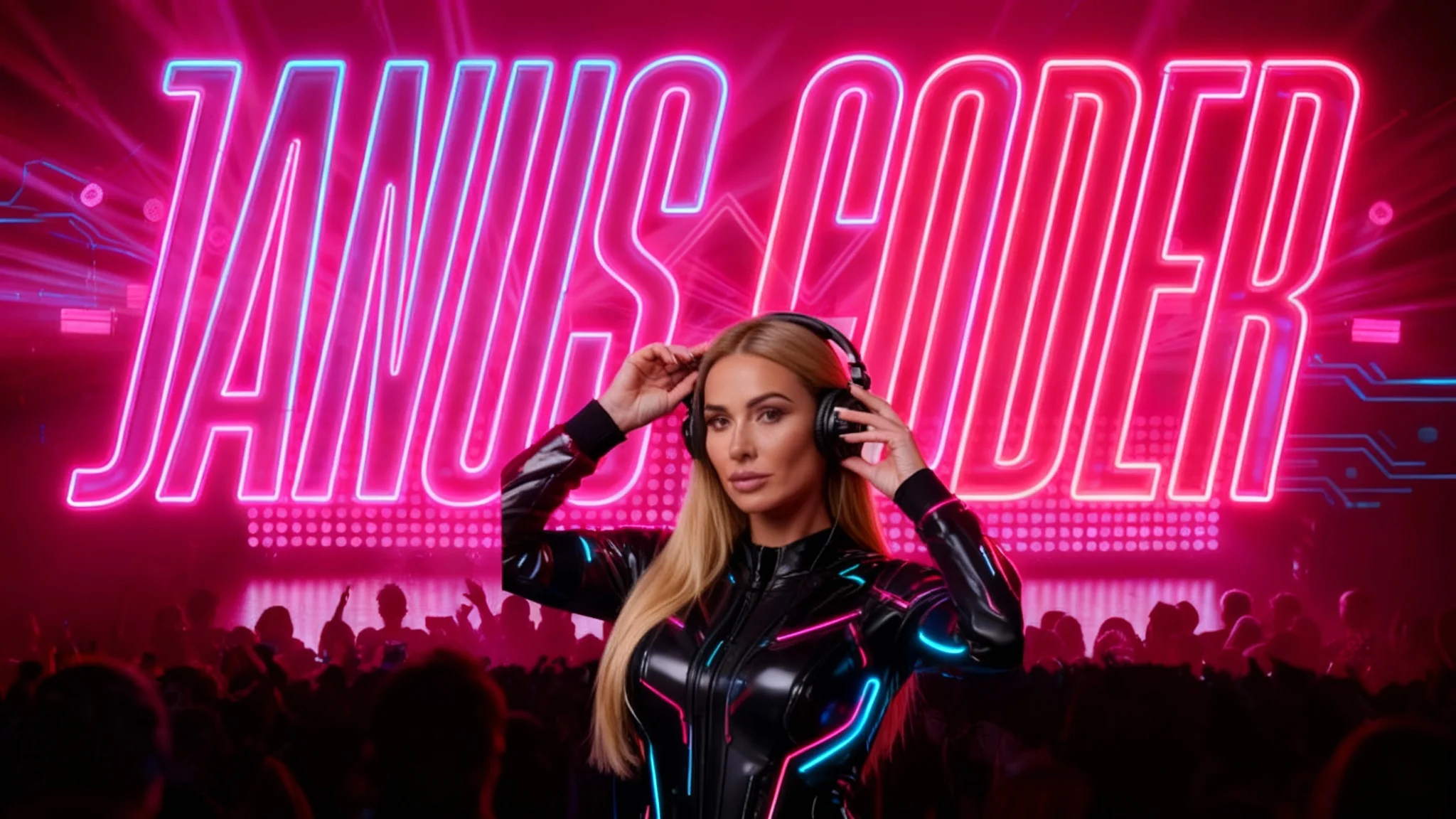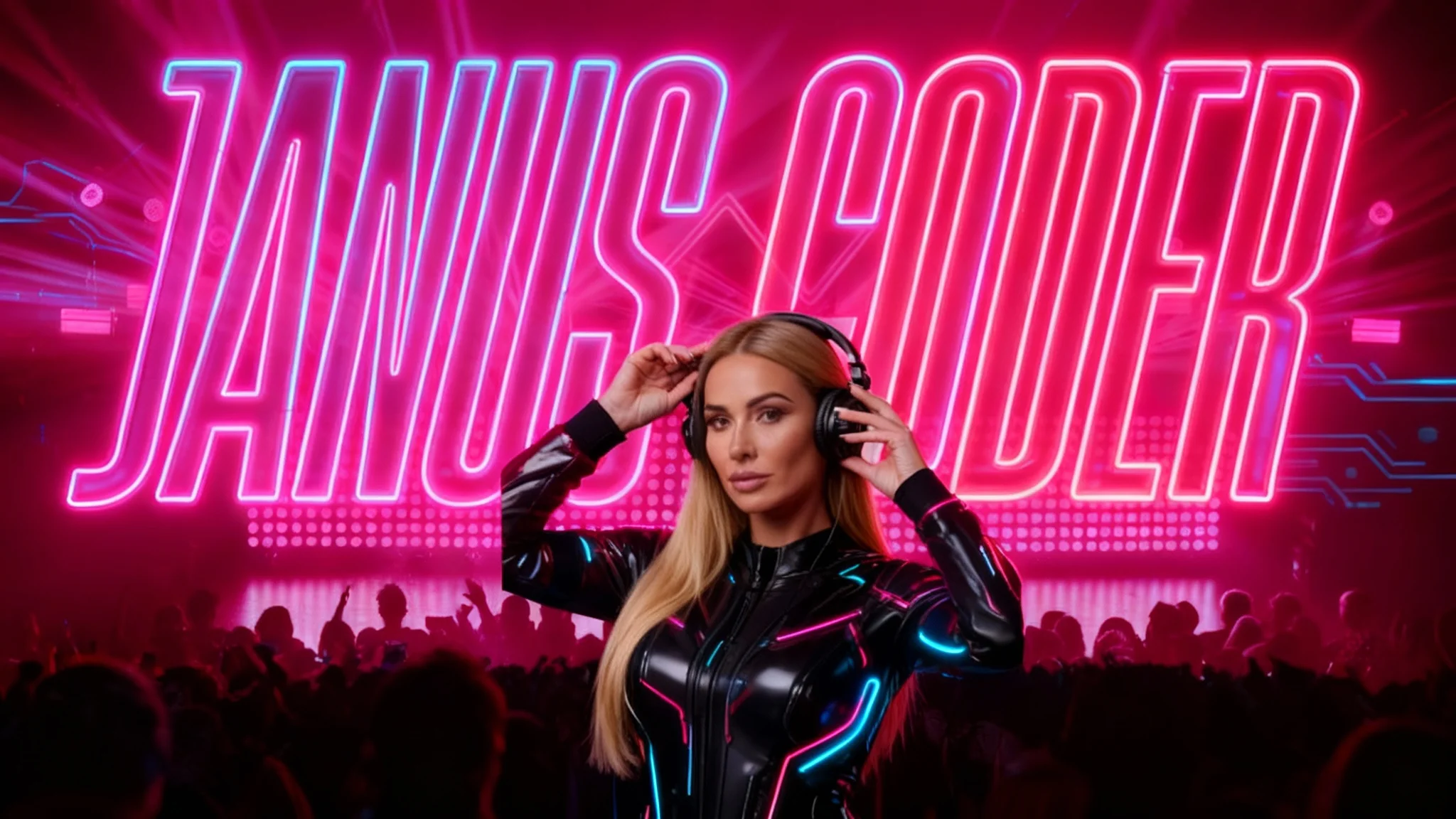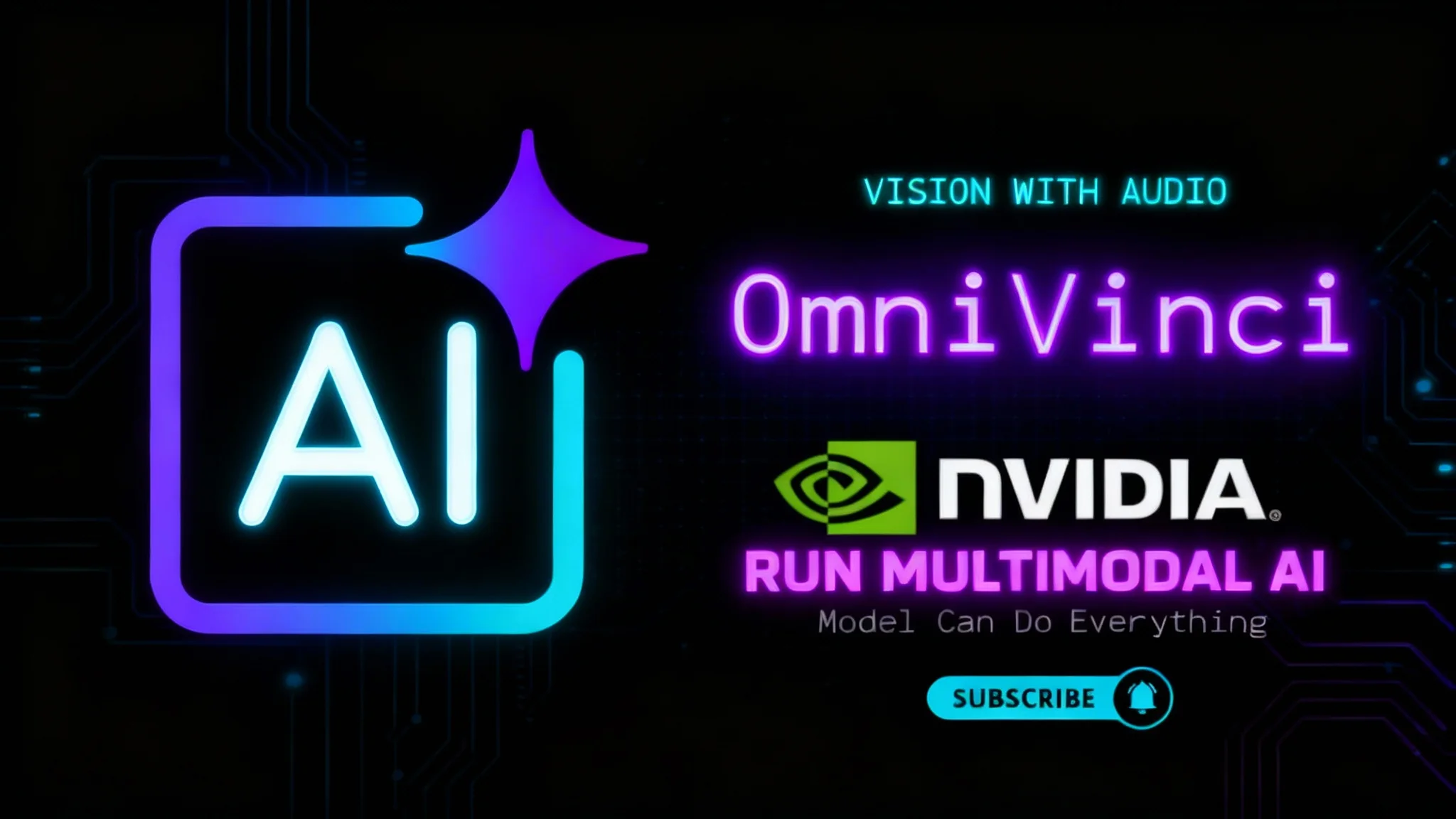JanusCoder Vision 8B Install Locally

Table Of Content
- What is JanusCoder?
- Overview of JanusCoder Variants
- JanusCoder Installation and Setup
- System and Environment
- Prerequisites
- Install Dependencies
- Authenticate and Download the Model
- Log in to Hugging Face
- Download JanusCoder V-8B (Vision)
- JanusCoder Architecture Overview
- Key Features of JanusCoder
- Run Locally in a Notebook
- Load the Model
- Task 1: Chart-to-Code
- Notes on dependencies
- Task 2: Interactive SHM Visualization from a Reference Image
- Memory usage
- Additional Use Cases
- Model Sizes and Options
- Step-by-Step Quickstart
- Troubleshooting Tips
- Security and Privacy
- Summary
JanusCoder is here. It comes in two flavors: a pure text model and a vision-capable model that accepts both images and text. In this guide, I set up the 8B vision variant locally, walk through installation, and run practical tasks that show how it understands visuals and produces working code.
Before installing, I’ll cover what the model is, how it’s built, and why its architecture matters for code intelligence. Then we’ll move into a clean, reproducible setup and run local inference.
What is JanusCoder?
JanusCoder is a unified multimodal model series designed for code intelligence. Its focus is code: understanding, reasoning about, and generating code from text and images. It is not a general-purpose assistant; it targets workflows where visuals and programming intersect.

The series blends capabilities from strong text and vision backbones, producing variants tailored for text-only and vision-plus-text use. The 8B text model is built on a “Qwen 3”-style foundation, while the 8B vision model combines “Qwen 2.5”-style components with an Intern 3.5 8B–class vision stack.
Training draws on Janus Code 800K, a large multimodal code dataset that enables the model to interpret screenshots, charts, and diagrams and translate them into executable code.
Overview of JanusCoder Variants
| Variant | Modality | Params | Backbone (as described) | Training Focus |
|---|---|---|---|---|
| JanusCoder 8B Text | Text only | 8B | Qwen 3–style | Code understanding/generation from text |
| JanusCoder V-8B | Vision + Text | 8B | Qwen 2.5 + Intern 3.5 8B–class vision | Code from images + text |
| JanusCoder 14B | Vision + Text | 14B | Not detailed in the script | Larger capacity option |
Notes:
- Naming reflects the terminology used in the script.
- The 8B vision variant is the focus of the local run shown here.
JanusCoder Installation and Setup
I used Ubuntu with a single NVIDIA RTX A6000 (48 GB VRAM) and a Python virtual environment. The steps below mirror the process from the script, focusing on simple, reproducible actions.
System and Environment
- OS: Ubuntu (any recent distribution should work)
- GPU: 48 GB VRAM recommended for the 8B vision model
- Environment: Python virtual environment
- Tools: PyTorch and Transformers
If you plan to run notebooks, Jupyter or JupyterLab is handy.
Prerequisites
- Python 3.9 or later
- Pip
- CUDA-enabled NVIDIA GPU and recent drivers
- Optionally, Jupyter for interactive workflows
Install Dependencies
- Create and activate a virtual environment.
- Install the core Python packages:
- torch (compatible with your CUDA stack)
- transformers
Tip: Install exact versions that match your system’s CUDA drivers to avoid mismatches.
Authenticate and Download the Model
You’ll need to log in to Hugging Face to download JanusCoder models.
Log in to Hugging Face
- Create or sign in to your Hugging Face account.
- Generate a read access token from your profile.
- Log in from your environment using the CLI or the library so the model files can download.
Download JanusCoder V-8B (Vision)
- Pull the JanusCoder V-8B model from Hugging Face.
- Expect multiple “shards” to download; this may take a while depending on your connection and disk speed.
Once the download finishes, you’re ready to load the model in a notebook or a Python script.
JanusCoder Architecture Overview
JanusCoder connects visual and programmatic understanding in one transformer-based system. Inputs can be images (e.g., screenshots, charts, diagrams) or text (e.g., code, instructions), or both together. Here’s the flow at a high level:
- Vision encoder: Converts images into numeric representations.
- Language encoder: Converts code and text into numeric representations tuned for syntax and semantics.
- Shared representation space: Both streams meet here so the model can reason across visuals and code together and produce executable output.
This design lets the model read a chart and output Python that reproduces it, or inspect a UI screenshot and propose edits to the source code.
Key Features of JanusCoder
- Multimodal code intelligence
- Accepts both images and text, enabling image-to-code and mixed-context prompts.
- Chart-to-code and figure reproduction
- Reads charts and plots and generates Python code that re-creates them.
- Web UI generation and editing
- Modifies webpage code from screenshots and instructions.
- Visual artifact creation
- Produces complete web applications or visual assets from prompts and references.
- Demonstration and dynamic visualization generation
- Builds or updates interactive visuals and demos from examples or reference images.
- Animation and motion-to-code
- Converts image or motion references into executable code (including HTML/JS or Python scripts).
The series is trained on Janus Code 800K, enabling robust code generation from multimodal inputs.
Run Locally in a Notebook
With the model downloaded, I launched a Jupyter notebook to run local inference. The steps below follow the flow from the script.
Load the Model
- Initialize the processor/tokenizer for text and images.
- Load the 8B vision model into GPU memory.
- Confirm the model is ready by printing a small test output or metadata.
Once loaded, the notebook is set to handle mixed inputs: an image (e.g., a chart) plus a short prompt describing the task.
Task 1: Chart-to-Code
I provided a bar chart image from local storage and asked the model to reproduce the Python code that generates the same plot. The process:
- Input
- Image: a bar chart (local file)
- Prompt: “Given this chart, reproduce the code in Python based on this image.”
- Inference
- The processor encodes the image and text.
- The model generates Python code as output.
- Execution
- I copied the generated code into a new cell and ran it.
The plot rendered correctly. Bars, labels, and values aligned with the original figure. The reproduction looked accurate and consistent with the source image.
Notes on dependencies
For plotting, I installed:
- matplotlib
- numpy
Once those were installed, the generated code ran without issues.
Task 2: Interactive SHM Visualization from a Reference Image
Next, I used a reference image for simple harmonic motion and asked the model to produce a full visualization with sliders (e.g., frequency, angular settings, amplitude) that update motion in real time.
- Input
- Image: reference diagram of simple harmonic motion
- Prompt: produce an interactive visualization (e.g., a single HTML file with controls), updating a spring and oscillator in real time as sliders move.
- Inference
- The model generated a complete HTML file.
- Execution
- I opened the HTML in a browser and tested interactions by adjusting controls.
The visualization responded immediately: slider changes updated the spring and oscillator motion as expected. The result came from a single generated HTML file, running fully on my machine.
Memory usage
During this task, GPU memory usage was just over 43 GB on the 8B vision model.
Additional Use Cases
- Take a screenshot of your website and ask the model to update the code based on textual instructions.
- Provide existing source code and a screenshot; ask for targeted changes that reflect your prompt.
- Feed diagrams or charts with instructions to generate the code that reproduces them.
- Use reference images to produce animations or interactive visual artifacts.
The model accepts both text and images and can produce HTML/JS or Python outputs suited to the request.
Model Sizes and Options
In this run, I used the 8B vision model. A 14B variant also exists if you need more capacity. Choose based on your GPU, latency, and workload constraints.
- 8B Vision: Strong balance between capability and memory footprint; observed ~43 GB VRAM usage in the tasks shown.
- 14B Vision: Larger model for users with more GPU memory who want more headroom.
Step-by-Step Quickstart
Follow these steps to go from zero to local multimodal inference:
- Prepare your system
- Install GPU drivers and CUDA.
- Set up Python 3.9+ and create a virtual environment.
- Install core libraries
- Install torch compatible with your CUDA version.
- Install transformers (and any model-specific helpers if the model card lists them).
- Authenticate with Hugging Face
- Create a Hugging Face account.
- Generate a read token.
- Log in from your environment so the model can be downloaded.
- Download JanusCoder V-8B
- Pull the 8B vision model from Hugging Face.
- Wait for all shards to download.
- Launch a notebook
- Start Jupyter or JupyterLab.
- Create a notebook for your tests.
- Load and test the model
- Initialize the processor/tokenizer for text+image.
- Load the model onto your GPU.
- Run a quick prompt to confirm inference works.
- Run a chart-to-code task
- Provide a chart image and ask for Python code that reproduces it.
- Install matplotlib and numpy if needed.
- Execute the generated code and compare results to the reference image.
- Build an interactive visualization
- Provide a reference image (e.g., simple harmonic motion).
- Ask the model to produce an interactive HTML with controls.
- Open the generated HTML and test the sliders and interactions.
- Explore your workflows
- Use screenshots and code snippets to request edits or new components.
- Iterate on prompts to refine outputs and match your requirements.
Troubleshooting Tips
- If model load fails, confirm GPU VRAM availability and reduce batch sizes if applicable.
- If downloads stall, verify Hugging Face token authentication and disk space.
- If generated code has missing imports, install the required packages and re-run.
Security and Privacy
Everything shown here runs locally. Images, prompts, and code remain on your machine when you download and run the model yourself. This is useful for proprietary projects and sensitive assets.
Summary
JanusCoder focuses squarely on code intelligence with multimodal inputs. The 8B vision variant reads charts, screenshots, and reference diagrams and turns them into executable Python or HTML/JS. Running locally, I reproduced a chart from an image and generated an interactive visualization for simple harmonic motion from a single reference image.
GPU memory usage for the 8B vision model was just over 43 GB on my setup. If you need more capacity, a 14B version is available. With text-and-image prompts and local control, JanusCoder opens up practical, private workflows for building and editing code directly from visual context.
Related Posts
![Character.AI: How to Fix 500 Internal Server Error [Updated]](/_next/image?url=%2Ferror%2Fcharacterai-how-to-fix-500-internal-server-error-updated.webp&w=3840&q=75)
Character.AI: How to Fix 500 Internal Server Error [Updated]
Troubleshooting Character.AI's 500 Internal Server Error: check server status, clear cache/cookies, disable extensions/VPN, and fix connection issues fast.

Kimi Linear by Moonshot AI
Moonshot AI’s Kimi Linear (48B A3B Instruct) introduces a hybrid attention design that makes LLMs faster and more efficient. Learn how it works and why it matters.

NVIDIA OmniVinci: Run Multimodal AI Locally
Learn how to install and run NVIDIA OmniVinci on your PC. We demo its see-read-listen-speak-reason powers and unpack core ideas like Omni-AlignNet.
